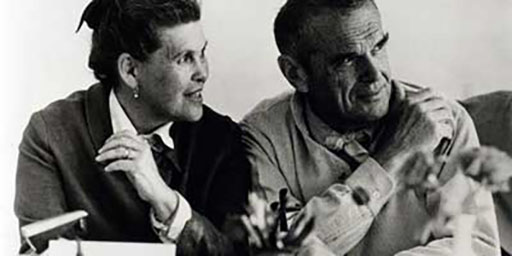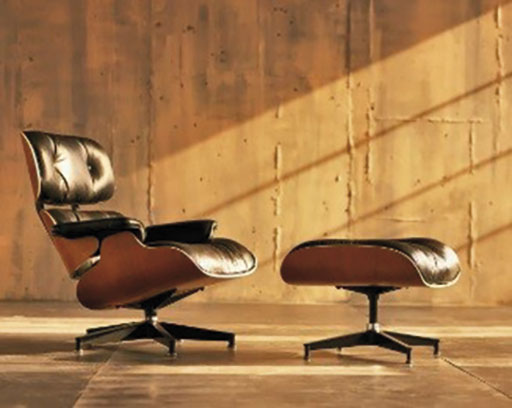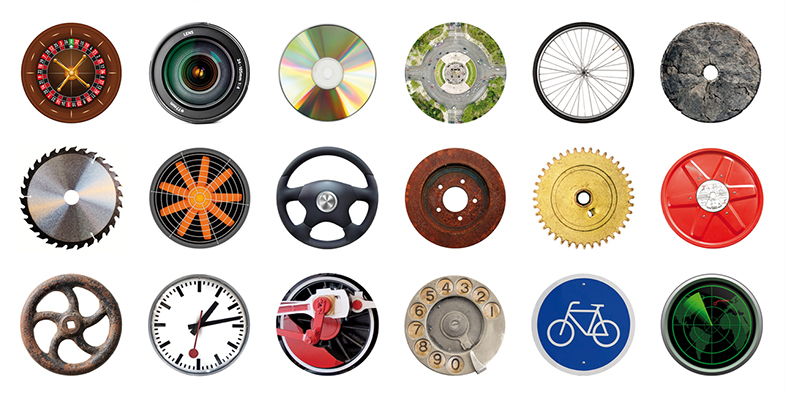2.3 Distinguishing terms: design
In the following activity, you will look at a case study relating to design.
Case study: Design
Charles and Ray Eames design original furniture
Charles and Ray Eames are among the most influential designers of the twentieth century. Charles had a background in architecture and Ray was an artist, who had studied with the German abstract expressionist painter Hans Hofmann. They met at the Cranbrook Academy of Art in Michigan and began to collaborate on a variety of projects, including architecture, furniture design, industrial design and photography. Following their marriage in 1941, they relocated to California and began to produce a series of original furniture designs that exploited compression-moulded plywood and other new materials. Following the Second World War, the couple licensed a US company to manufacture their new furniture designs. The Eames’ ‘LCW’ (Lounge Chair Wood) made from moulded plywood, was described by one leading critic as, ‘the chair of the century.’ This was followed in 1956 by the ‘670/671’ Eames Lounge Armchair and Ottoman (pictured) and many other products. The family home that they designed in 1949 also become an icon of ‘mid-century’ design. Many of the Eames’ furniture designs remain in production today. These designs are also widely imitated, a perhaps unwelcome, yet significant, indication of their enduring quality and popularity.


Activity 5
- Can you think of another example of good (or bad) design? As with invention, you could select a product design or something less tangible like the design for a process or service. Enter your own example in the box below.
Discussion
Designers respond to users’ needs and market requirements by providing physical shape, form or order to products, services and other artefacts (e.g. processes and organisational structures). The design process typically involves a series of stages, as the designers (often working in conjunction with technicians, marketers and other specialists) create and refine a concept. In the case of product designers such as Ray and Charles Eames, this might involve a progression from initial sketches though to detailed drawings and technical specifications. Designs are sometimes unique and un-repeatable. However, products destined to be produced in large numbers, such as Eames chairs, need to be designed in order to facilitate volume manufacturing. (You can find out more about the Eames design partnership at their official site [Tip: hold Ctrl and click a link to open it in a new tab. (Hide tip)] ). We now turn to the concept of innovation to distinguish it from discovery, invention and design. To do so, we reconsider the three immediately previous examples because each of them can be viewed as a step on a much longer path.
